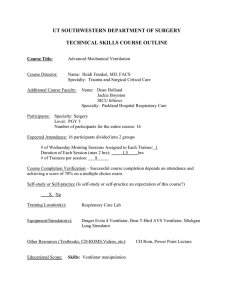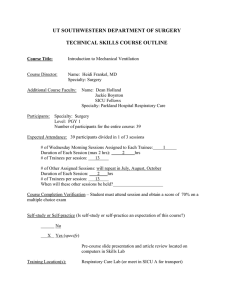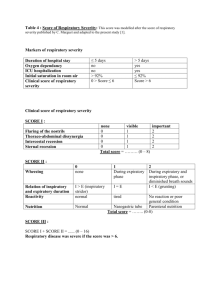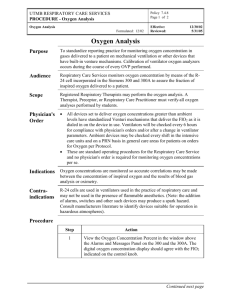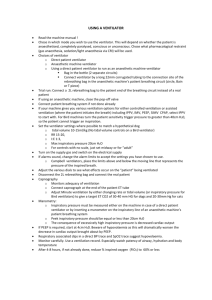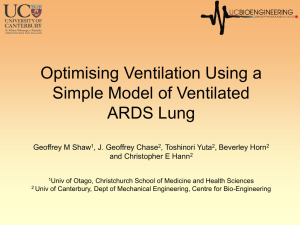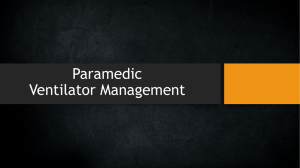Measure of Static and Dynamic Compliance of the Ventilator Patient
advertisement
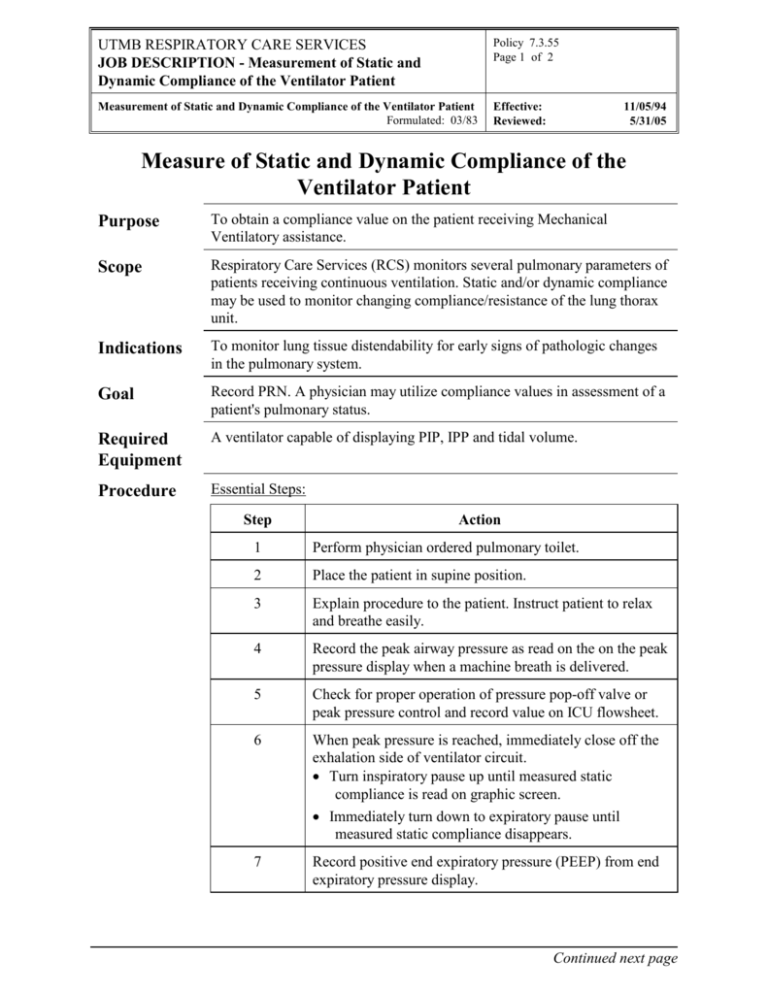
UTMB RESPIRATORY CARE SERVICES JOB DESCRIPTION - Measurement of Static and Dynamic Compliance of the Ventilator Patient Policy 7.3.55 Page 1 of 2 Measurement of Static and Dynamic Compliance of the Ventilator Patient Formulated: 03/83 Effective: Reviewed: 11/05/94 5/31/05 Measure of Static and Dynamic Compliance of the Ventilator Patient Purpose To obtain a compliance value on the patient receiving Mechanical Ventilatory assistance. Scope Respiratory Care Services (RCS) monitors several pulmonary parameters of patients receiving continuous ventilation. Static and/or dynamic compliance may be used to monitor changing compliance/resistance of the lung thorax unit. Indications To monitor lung tissue distendability for early signs of pathologic changes in the pulmonary system. Goal Record PRN. A physician may utilize compliance values in assessment of a patient's pulmonary status. Required Equipment A ventilator capable of displaying PIP, IPP and tidal volume. Procedure Essential Steps: Step Action 1 Perform physician ordered pulmonary toilet. 2 Place the patient in supine position. 3 Explain procedure to the patient. Instruct patient to relax and breathe easily. 4 Record the peak airway pressure as read on the on the peak pressure display when a machine breath is delivered. 5 Check for proper operation of pressure pop-off valve or peak pressure control and record value on ICU flowsheet. 6 When peak pressure is reached, immediately close off the exhalation side of ventilator circuit. Turn inspiratory pause up until measured static compliance is read on graphic screen. Immediately turn down to expiratory pause until measured static compliance disappears. 7 Record positive end expiratory pressure (PEEP) from end expiratory pressure display. Continued next page UTMB RESPIRATORY CARE SERVICES JOB DESCRIPTION - Measurement of Static and Dynamic Compliance of the Ventilator Patient Policy 7.3.55 Page 2 of 2 Measurement of Static and Dynamic Compliance of the Ventilator Patient Formulated: 03/83 Effective: Reviewed: 11/05/94 5/31/05 Procedure Continued Step Action 8 Make sure alarms are adjusted properly and functional 9 Calculate dynamic and static compliance using the following formulas: Dynamic compliance = exhaled tidal volume cm H2O peak inspiratory pressure - PEEP Static compliance = exhaled tidal volume cm H2O plateau pressure - PEEP 12 Record values on ICU flow sheet and the procedure on the treatment card per RCS Policies # 7.1.1and # 7.1.2. Infection Control Follow procedures outlined in Healthcare Epidemiology Policies and Procedures #2.24; Respiratory Care Services. http://www.utmb.edu/policy/hcepidem/search/02-24.pdf References Scanlan CL, Realey A, Earl L, Spearman CB, Sheldon RL, Eds. Egan's Fundamentals of Respiratory Care. 8th edition. St. Louis: Mosby-Year Book; 2003. F. Ross Payne, Study Guide to Accompany Mechanical Ventilation, Physiological and Clinical Applications, Illustrated, Mosby 3rd Edition 1999 M. C Stock, Azriel Perel, Handbook of Mechanical Ventilatory Support: 2nd Edition, Lippincott Williams & Wilkins, July 1997 Kenneth A. Wyka; Paul J. Mathews; William F. Clark; Foundations of Respiratory Care First Edition. Delmar Learning Dean Hess, Neil MacIntyre, Alex Adams, William F. Galvin, Shelly C. Mishoe and Allan B. Saposnick Respiratory Care - Principles and Practice W. B. Saunders

